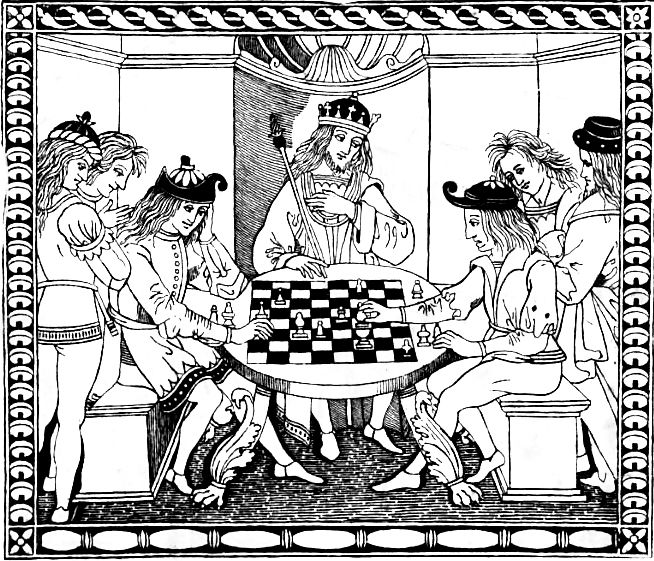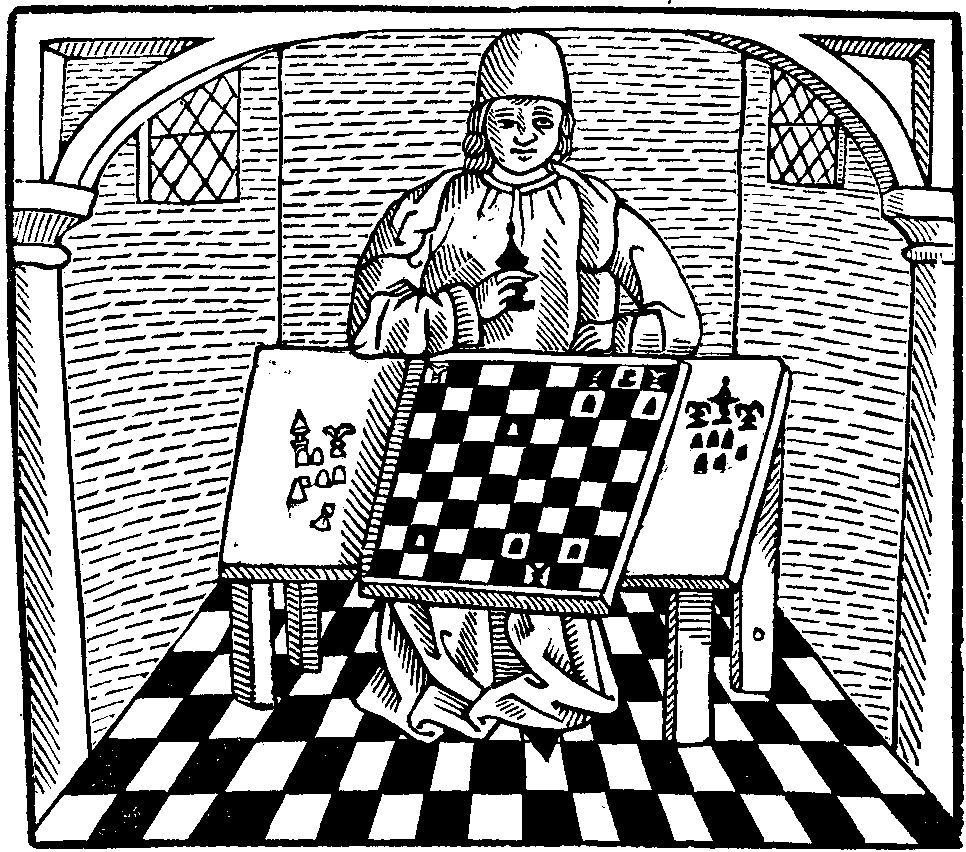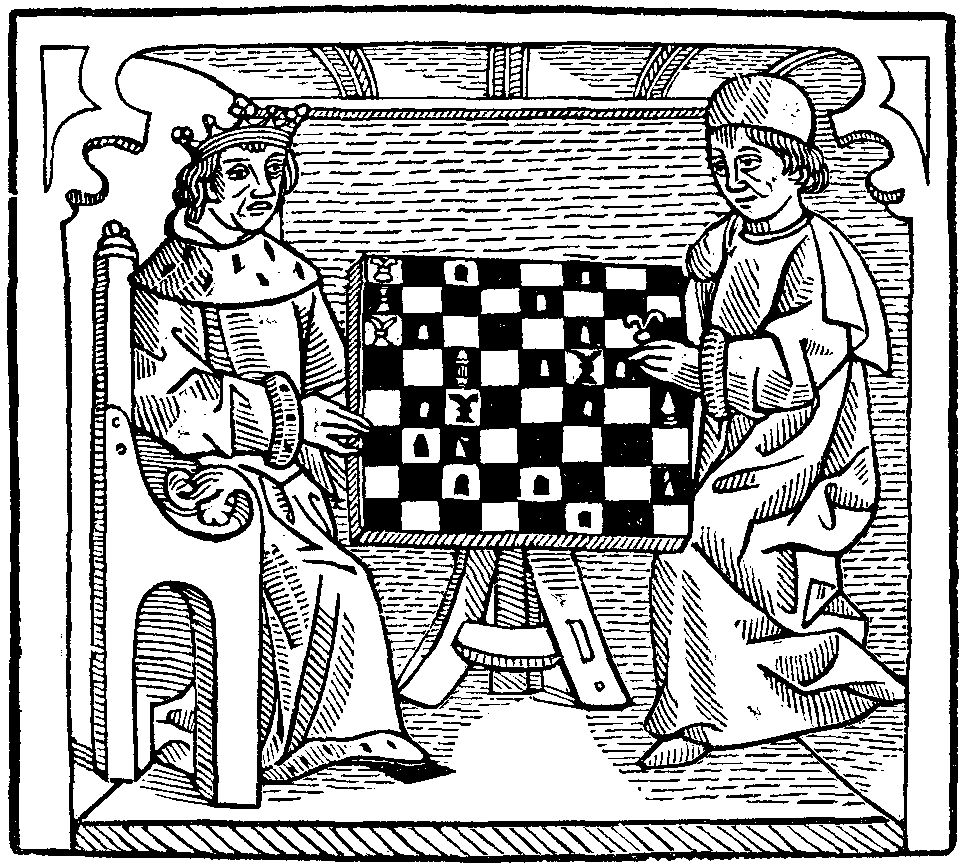Fifteenth century Cessolis chess sets
Another version of the Cessolis sermons (previously discussed for the fourteenth century) was published in the second half of the fifteenth century as Liber de moribus hominum et officiis nobilium super Ludo Scacchorum (Book of the customs of men and the duties of nobles or the Book of Chess). An edition printed in Utrecht in 1473 has one illustration showing a group of people, two of whom are playing chess, watched over by the King. This edition became very popular, and was translated into many languages, including English, in several editions published by William Caxton (first in 1474) as The Game and Playe of the Chesse. The second edition of this, published in 1483, contains sixteen woodcut illustrations, two of which show chess boards. The first shows the main character of the book, the Philosopher, considering how to best teach the game, and the second shows him playing chess with the King. As in the fourteenth century, neither the Ludo Scacchorum nor Caxton's publication of the Cessolis sermons, discuss the game of chess, how to play, or chess problems. The illustrations in both books, however, offer some insight into the form of chess pieces of the late fifteenth century. The two sets illustrated differ in many respects, so are considered separately below.
The chess set from Jacobus de Cessolis's Ludo Scacchorum
The illustration to Liber de moribus hominum et officiis nobilium super Ludo Scacchorum shows a game in progress, with nine pieces still on the board and five off, two to the left and three to the right. None of the pieces are differentiated into black and white. The remaining eighteen pieces are not illustrated. For notation the King’s side (playing from the left of the illustration) is black, and the Philosopher’s (from the right) is white.
The forms of the pieces in the illustration are, with the exception of two, all variations on a theme, with little consistency or distinctiveness where such is needed. However if we accept that both kings need to be on the board during a game, then the two pieces resembling a pear on a pedestal are them. One is in the hand of the Philosopher, hovering above d3, while the other is at c6. We can then exlude all that might be pawns. These are simply a turned base, tapering upwards, with a terminal ball. Some have a collar, while some are without. There are five on the board (g3, d4, c5, e8, f7) and two off the board, one to the right and one to the left, both partially hidden. This then leaves the queens, bishop, knight and rook. The two forms that do not conform to the majority are the fleur-de-lis on a base (a1) and the half sphere on a three-tiered base (b3). The fleur-de-lis most probably represents the rook, and the other probably the knight.
We are then left with three pieces off the board. Two, one on each side, are topped by small terminal balls on a tapering body above a wide flattened disc. One has a smaller flattened disc immediately below the first, sitting on a tapering base which sits on a pedestal. The other lacks the second disc and pedestal, but otherwise is similar enough in its significant upper features to suggest they are the same piece, probably the two queens. The third, pictured on the Philosopher's side, has a tapering base on a pedestal, surmounted by a wide, rounded and flattened waist, in turn surmounted by a tapering truncated point. This is probably the bishop. These interpretations are necessarily somewhat speculative and reflect the partial and inconsistent nature of the representation of the pieces in the illustration.
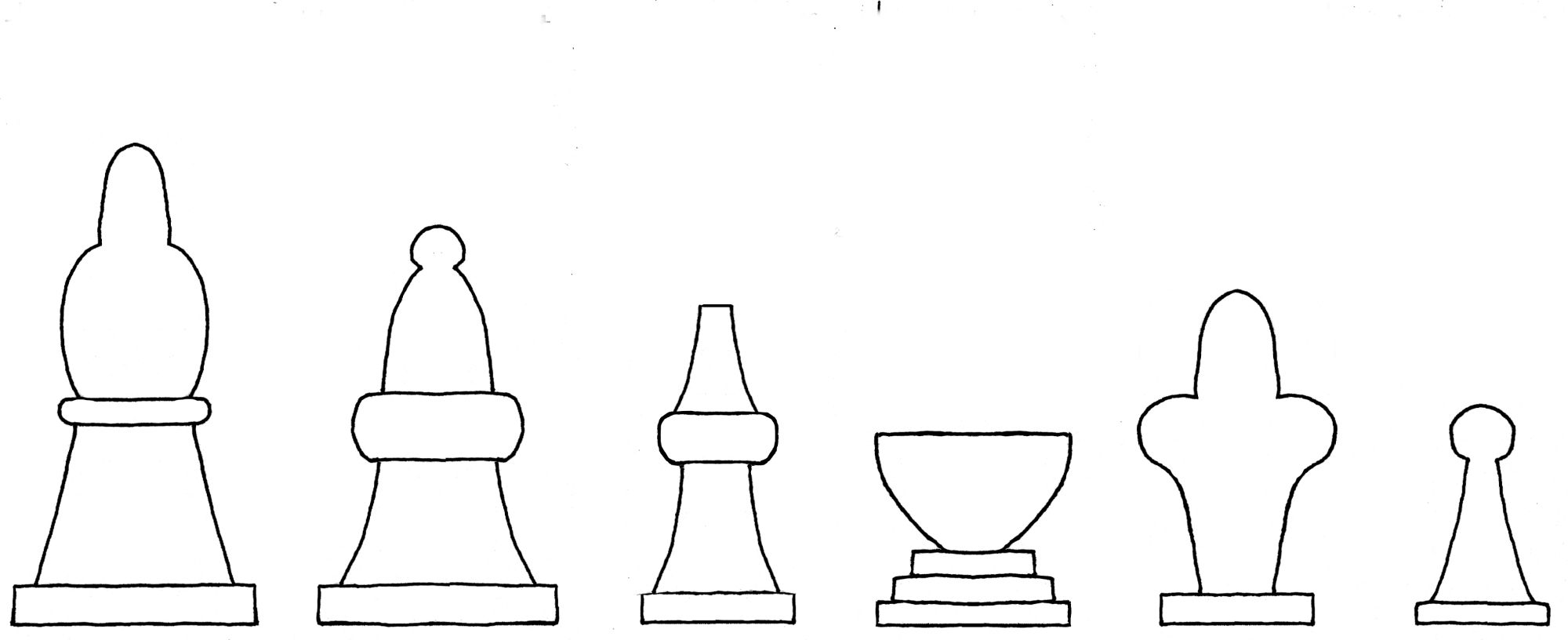
Chess set from William Caxton’s The Game and Playe of the Chesse
Two of the sixteen woodcuts in the second edition of William Caxton’s The Game and Playe of the Chesse (1483) are of chess boards with mostly identifiable pieces, though a couple are enigmatic. This is most probably due to the woodcutter not fully understanding the relevant details of the pieces. In the first illustration (above) the Philosopher sits by himself at the board, considering the game. He holds a king in his hand, and there are pieces both on the board and off, white to the left and black to the right. In the second illustration (below) he is playing a game with the King. The pieces are differentiated, but, probably for the sake of clarity of the woodcut, there are no black pieces on the black squares, while white pieces occupy both black and white squares. As with the Ludo Scacchorum game above I have assumed the King is playing black, since the Philosopher has a white rook in his hand.
In illustration two there is a clear rook (at h8) and a bishop (at f8) in their correct places for the start of the game (though they ought to be black). Both have the stylised medieval form on a low rounded pedestal with a collar. In this illustration the Philosopher holds a white rook, and there is a black rook at d6. There is a black bishop at e3. In illustration one, off the board on the left, are two white knights, as well as a rook, four pawns and a possible queen who stands behind one of the four pawns. The knights are simple early medieval forms, somewhat pointed, though the four knights in the two illustrations vary a little. As well as the two in illustration one, there are white knights at b1 and c6 in illustration two. In illustration one, as well as the king in his hand, there is a possible king, also black, off the board to the right of the Philosopher. A more clearly illustrated queen than that in illustration one can just be seen just below the hand of the Philosopher in illustration two at d1. This queen has a more or less egg shaped upper part on a short two-tiered pedestal. The pawns are small rounded domes.
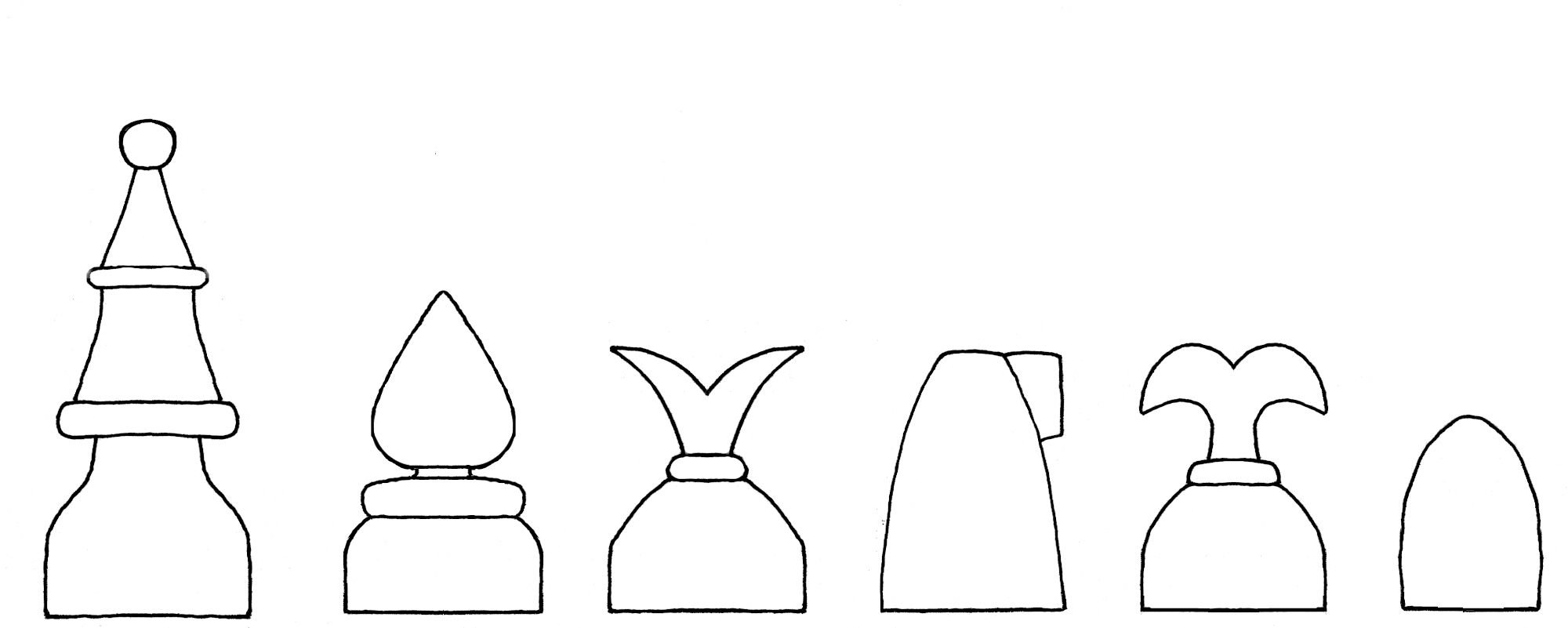
H.J.R. Murray discussed Caxton's chess set, and illustrated it (at the top of page 770) in his well-known History of Chess. The form of the knight as interpreted by Murray, and copied by a number of recent reconstructions, differs from the interpretation here, and shows similarities to the innovations in the form from late fifteenth century Italy. However Caxton's original 1483 woodcut appears to show the earlier medieval form, with the set as a whole having more in common with those from the thirteenth and fourteenth centuries. There is also no evidence for the elaborate form of the pawns Murray suggests for Caxton’s set.

